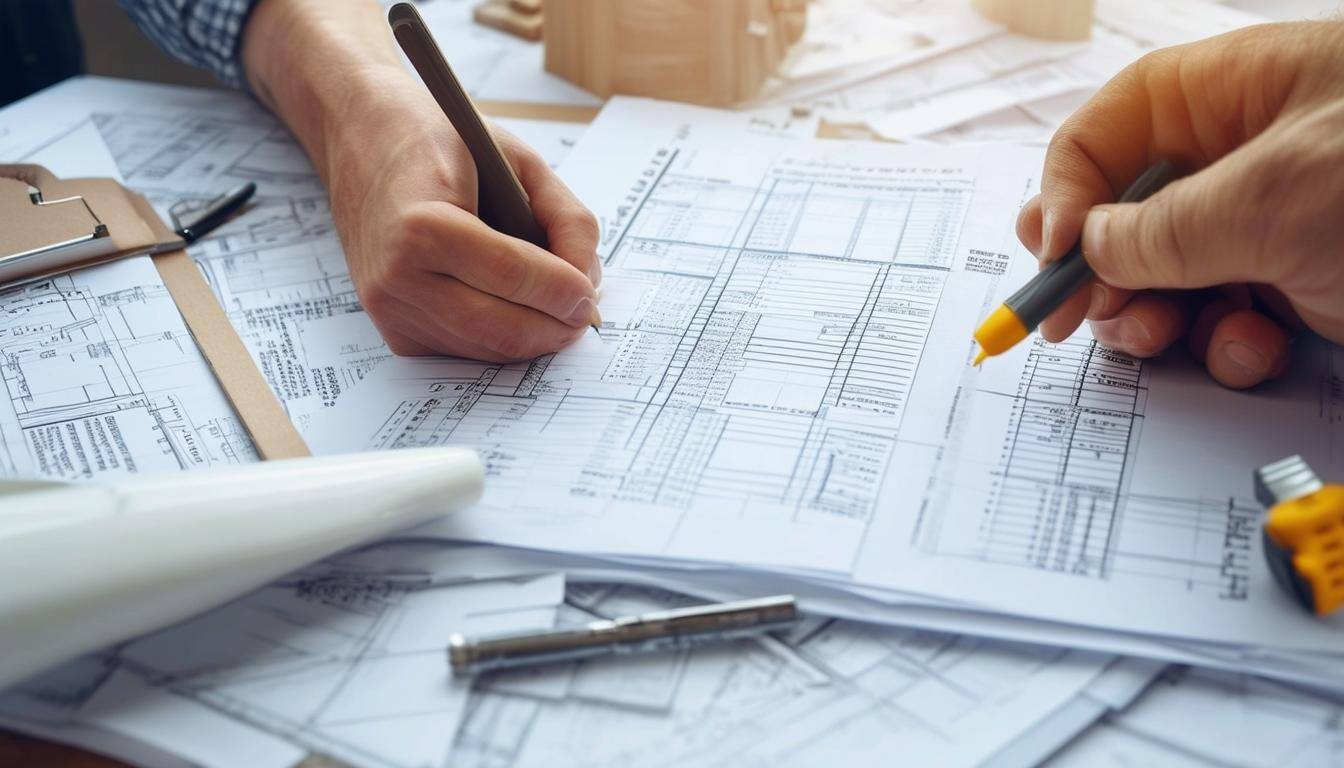
Strategies to Reduce Construction Costs
Discover Key Strategies to Reduce Construction Costs from Planning to Project Completion.
Reducing construction costs is a high priority for project managers and stakeholders alike. Yet, in an industry with countless variables, staying on budget without compromising quality can feel like a balancing act. In this blog, we’ll explore proven strategies to streamline costs while maintaining the efficiency, safety, and quality that every successful construction project demands.
How to Reduce Construction Costs
Reducing construction costs isn’t just about saving money - it’s about maximizing the value of every dollar spent and delivering exceptional results. Here’s why managing construction costs is crucial for project success:
Staying Within Budget
When costs are controlled, teams can avoid delays, maintain quality, and foster stakeholder trust - key elements for delivering a project on time and to specification. Budget overruns often lead to rushed decisions, compromises on materials, or extended timelines, which can reduce project integrity and client satisfaction. By managing the budget carefully from the start, project managers can better navigate unexpected challenges.
Timely Project Completion
By carefully allocating funds, project managers can ensure that critical resources, materials, and labor are available exactly when they’re needed, reducing the risk of bottlenecks and downtime. When costs are well-managed, it’s easier to anticipate potential challenges and proactively address them without causing delays. A balanced budget also allows for contingencies, providing flexibility to handle unforeseen issues swiftly and without disrupting the timeline.
Maximizing Profitability
Cost reduction is directly linked to profitability and financial stability in the construction industry. When projects stay within budget, companies can allocate saved resources to other initiatives, enhancing operational efficiency and long-term financial health. Consistently managing costs without compromising standards builds a company’s reputation, attracting more clients and leading to steady revenue growth. By prioritizing cost efficiency, construction firms can bolster their profitability and ensure a stable foundation for future projects.
Effective Planning and Early Design Phase Strategies
The design phase and initial planning are critical stages that can significantly influence final construction costs. Decisions made during these early stages establish the project’s scope, materials, and timelines, setting the foundation for cost efficiency throughout.
Value Engineering
Value engineering during the design phase helps maximize a project’s value while keeping costs in check. By analyzing each design element - materials, construction methods, and systems - teams can assess alternatives that deliver equal or superior functionality at a lower cost. This process ensures that every design aspect contributes meaningfully to the project’s goals without unnecessary expenses. Value engineering encourages collaboration between architects, engineers, and contractors to explore cost-effective solutions that maintain quality, safety, and performance, ultimately creating a design that aligns with budget expectations and enhances project viability.
Early Collaboration
Early collaboration between engineers and contractors is invaluable for identifying potential cost challenges and crafting effective solutions before construction begins. It allows team members to share their expertise and perspective on cost-saving opportunities. It also enables them to address design complexities, optimize material choices, and anticipate logistical hurdles that might otherwise lead to budget overruns. This promotes cost-efficiency and strengthens the project’s overall workflow, reducing the likelihood of costly delays.
Pre-Construction Plan
A detailed pre-construction plan is essential for accurately forecasting budgets and proactively identifying potential cost overruns. It outlines every project aspect to create a clear financial roadmap. By thoroughly assessing these elements before breaking ground, project managers can spot any discrepancies between projected and actual costs, allowing them to adjust before expenses spiral. Thorough pre-construction plans ensure the budget is grounded in realistic expectations, reduce the risk of unforeseen costs, and provide a solid framework for financial oversight.
Sustainable Practices for Cost Savings
Sustainable building practices offer a unique opportunity to align environmental responsibility with cost-saving measures. Let’s take a look at how sustainability initiatives can reduce construction costs.
Reducing Material Waste
Reducing material waste is a practical way to enhance sustainability and cost efficiency in construction projects. By adopting targeted strategies, teams can minimize excess, repurpose resources, and cut down on disposal expenses. You can reduce waste by doing the following:
-
Precise Material Ordering: Order only the quantities needed to avoid excess and reduce disposal costs.
-
Recycling Unused Materials: Repurpose off-cuts for other projects, supporting both cost savings and waste reduction.
-
Efficient Storage and Handling: Proper storage helps prevent damage and spoilage, preserving materials for intended use.
-
Standardized Measurements: Use standard sizing to minimize off-cuts and waste from non-standard pieces.
Optimizing Energy Efficiency
Incorporating energy-efficient practices into construction projects can lead to significant long-term savings by reducing operational costs tied to energy consumption. Implementing energy-efficient lighting, HVAC systems, and insulation lowers utility expenses for building owners and enhances the project’s overall sustainability. In many areas, the U.S. government offers incentives - such as tax credits, rebates, and grants - for adopting energy-efficient technologies, which can help offset upfront costs. These measures help create value both during construction and throughout the structure’s lifecycle.
Technological Tools and Digital Solutions
Incorporating technology into construction practices can significantly reduce costs and improve efficiency. Here’s how:
Building Information Modeling (BIM)
Building Information Modeling (BIM) is a powerful tool that enables project teams to identify potential issues during the design phase, helping prevent costly modifications and delays down the line. BIM creates a digital representation of the project, allowing architects, engineers, and contractors to visualize each component in detail, detect conflicts, and address design flaws before construction begins. This proactive approach reduces the need for on-site adjustments and enhances coordination among team members. By leveraging BIM, construction projects can achieve greater accuracy and efficiency, keeping timelines and budgets on track.
Cost Management Software Like Vitruvi
Construction cost management software provides a centralized solution for managing financials across multiple projects, enhancing budget oversight and improving decision-making efficiency. With tools to track expenses, monitor cash flow, and forecast costs, this software enables project managers to maintain real-time financial visibility, reducing the risk of budget overruns.
Vitruvi’s construction cost management software takes this one step further by integrating with project workflows, allowing teams to seamlessly track budgets, manage resources, and streamline reporting. This tool not only saves time but also supports data-driven decisions, ensuring every financial aspect of a project is aligned with its overall goals.
Leveraging Additional Tools
Integrating additional tools like GIS and ERP systems with construction management software offers significant benefits for managing project budgets and boosting efficiency. Geographic Information Systems (GIS) provide valuable spatial data, aiding in precise site planning and resource allocation, which can prevent unexpected costs related to location-specific challenges.
Technology and software systems can centralize data across departments, enabling seamless coordination and accurate budget tracking from procurement to payroll. Together, these integrations allow for real-time, comprehensive financial insights and streamlined workflows, empowering teams to make informed decisions quickly.
Efficient Resource and Financial Management
Effective resource and inventory management can lead to significant cost savings and reduced waste. Some strategies for achieving this include:
Just-in-Time Delivery
Adopting Just-In-Time delivery practices in construction can significantly minimize storage costs and reduce risks associated with material damage or theft. By scheduling materials to arrive precisely when they’re needed on-site, JIT delivery reduces the need for extensive storage facilities and limits the time materials are exposed to potential wear or loss. This reduces excess inventory and supports a safer, more organized work environment.
Bulk Purchasing
Bulk purchasing can be a powerful cost-saving strategy when paired with accurate material forecasting. Project managers can often negotiate better pricing from suppliers when ordering materials in large quantities. However, the key to successful bulk purchasing lies in precise forecasting - knowing exactly what materials are needed and when ensures that these supplies are efficiently used and do not contribute to waste or require additional storage.
Resource Management
Comprehensive resource management plans ensure that every resource is used efficiently throughout a construction project. These plans help project managers avoid shortages, reduce idle time, and minimize waste by outlining specific requirements, schedules, and allocation strategies in advance. Effective resource management aligns with project timelines and budget goals, allowing teams to coordinate seamlessly and adapt quickly to changing needs. This enhances productivity and reduces overall project costs, supporting a more predictable construction process that maximizes the value of each resource.
Enhanced Contractor and Subcontractor Management
Ensuring effective management of contractors and subcontractors can lead to smoother project execution and cost control. Here’s how:
Subcontractor Integration
Using Vitruvi’s platform to manage subcontractors enhances both reliability and quality control on construction projects. With Vitruvi, project managers can track subcontractor performance, monitor task completion, and maintain clear communication, ensuring that every aspect of subcontracted work aligns with project standards and timelines. This centralized oversight helps identify potential issues early, allowing for prompt adjustments to prevent delays and budget overruns. By providing a transparent and structured workflow, Vitruvi empowers subcontractors to deliver consistently high-quality work, building a reliable partnership that supports project success and fosters trust.
Defining Clear Scopes of Work
Defining clear scopes of work is crucial for preventing misunderstandings that can lead to costly rework, delays, or disputes. By outlining precise expectations, deliverables, and responsibilities for each team member and subcontractor, project managers ensure that everyone is aligned from the outset. A well-defined scope clarifies project boundaries, reduces the likelihood of scope creep, and allows teams to plan accurately for labor and materials, minimizing unexpected costs. This approach enhances communication and supports a smooth, efficient workflow, ultimately helping the project stay on time and within budget.
Continuous Monitoring and Collaboration
By regularly tracking expenses and comparing them against the budget forecast, project managers can detect discrepancies as they arise, enabling quick adjustments to keep costs under control. This minimizes the risk of budget overruns and ensures that financial decisions are based on real-time data. Consistent financial monitoring also fosters open communication with stakeholders, which builds trust and supports collaborative problem-solving to maintain alignment with the project’s financial goals.
Training and Development
Investing in ongoing training and development for the construction team can reduce errors, improve safety, and boost cost efficiency. Let’s take a closer look.
Regular Training Programs
As construction technologies and methods evolve, continuous learning helps teams stay competitive and prepared to apply innovative solutions effectively. Training programs improve proficiency in critical areas, from safety protocols to advanced construction software, empowering employees to work more efficiently and reduce costly errors. By investing in regular skill development, companies not only foster a culture of excellence but also build a capable, adaptable workforce that contributes directly to project success and sustainability.
Minimizing Errors and Rework
When team members have a thorough understanding of their tasks and are proficient in the latest construction practices, they’re better equipped to execute work accurately the first time, avoiding mistakes that could disrupt the project timeline. Skilled employees can identify potential issues early, make informed decisions on-site, and collaborate effectively to maintain quality standards. This high level of expertise enhances productivity and supports efficient resource use, keeping the project on track and within budget.
Reduce Construction Costs with Vitruvi
Effective cost management in construction goes beyond simply cutting expenses - it’s about creating a balanced, strategic approach that supports quality, efficiency, and long-term success. By implementing thoughtful planning, leveraging advanced tools like Vitruvi, and fostering strong collaboration across teams, construction managers can gain greater control over budgets and schedules.
Need help reducing your construction costs? Book a demo today to see how Vitruvi construction cost management software can help!
Similar Posts
Subscribe and stay up to date with the newest posts delivered right to your inbox!

